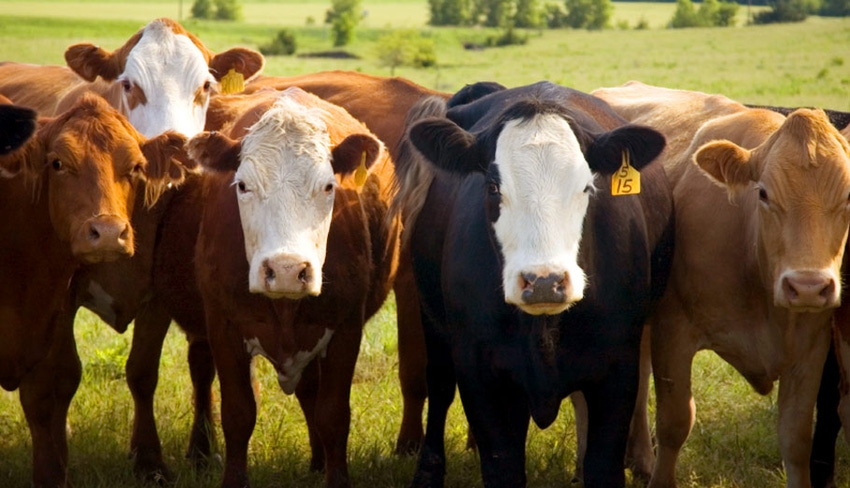Despite what some say in their crusade against meat consumption, the thinking that livestock production is a big polluter is flawed.
July 6, 2018

Many readers may know of Jonathan Safran Foer, at least indirectly, from his 2005 book, Extremely Loud & Incredibly Close. If the book doesn’t strike a chord, you may know him from the ensuing movie adaption (2011) starring Tom Hanks and Sandra Bullock –- nominated for two Academy Awards including Best Picture.
Foer subsequently published his first stab at non-fiction, Eating Animals, in 2009. Once again, his work is being transformed into movie form –- only this time it’s touted as a “documentary.” Along the way, Foer struck up a friendship with actress Natalie Portman, who serves as narrator for the film.
That brings us to today. I happened to catch a promotional interview with Portman on CBS This Morning (June 15). The lead-in went like this:
[Natalie Portman] is a long-time activist for animal rights and the environment. Her new documentary, Eating Animals, explores the rise of so-called ‘factory farming’ in America and some of the potential alternatives to meat. The movie is an adaptation of the 2009 best-selling book by the same name.
The interview’s lead-off question surrounded what Portman wanted us to know about the documentary. She explains:
Reading the book, that this movie is based on, is so eye-opening…it’s completely closed –- the meat industry…. because it’s appalling to any of us…the conditions are like factories – they’re factory farms…mass-produced animals in very tight conditions…it’s also polluting – it’s the number one contributor to pollution – more than cars, if you care about the environment you should care about factory farming and changing farming practices.
I tripped on the “completely closed” comment. The Glass Walls collaboration between Temple Grandin and the North American Meat Institute immediately comes to mind. And she disregards companies like Where Food Comes From and others that exist for the sole purpose of increasing transparency to consumers.
But it was the polluting reference that really caught my attention. For whatever reason, vegans and vegetarians like to use that line of logic as some sort of knock-out punch. It all stems back to 2006 when the FAO published Livestock’s Long Shadow.
All of this got me to digging. I wanted to chase down some better perspective around our use of electricity in the U.S. Given that it’s summer, I was especially interested in our use of air conditioning and how it’s changed over time.
EPA reports that about 72% of electricity consumption goes to commercial and/or residential buildings (the other portion attributable to industrial and manufacturing purposes). And about 25-30% of commercial and residential electricity consumption is due to HVAC use. Tying that together, roughly 20% of all electricity production is now dedicated to heating and cooling homes and buildings.
Sometimes I think I’m beginning to get old, but many of my peers talk about air conditioning as a relatively new phenomenon. Those anecdotal observations are right. In 1960 about 13% of homes in the U.S. possessed air conditioning; that climbed to 55% in 1980 and currently stands around 90%.
Stan Cox, author of the book Losing Our Cool, notes that the U.S. now uses as much electricity for air conditioning as it consumed for all purposes in 1955. Cox notes that additional greenhouse emissions from air conditioning in the U.S. add up to about 500 million tons of CO2 equivalent per year.
In contrast to conventional wisdom, during the same time the livestock industry’s climate footprint has gone the other way. In 1980, (when just a little over half our homes had air conditioning) the cattle population totaled 111.2 million head; in 2015 (at which point nearly all homes have air conditioning), it was down to 89.8 million head. That represents a decline of 21.4 million head.
And if each head produces 2,300 kg CO2 equivalent annually, the U.S. cattle industry is generating approximately 50 million tons less CO2 equivalent now versus 1980. In other words, U.S. agriculture’s biggest GHG scapegoat –- cattle -– has established a shrinking climate footprint over time (while electricity’s footprint is increasing).
But never mind the facts, agriculture gets criticized from the comfort of an air-conditioned news studio. No one summarizes the misrepresentation of agriculture better than Dr. Frank Mitloehner (University of California-Davis, department of animal science):
Both globally and in the U.S., energy production and use, as well as the transportation sectors, are the largest anthropogenic contributors of greenhouse gasses (GHG), which are believed to drive climate change. While there is scientific consensus regarding the relative importance of fossil fuel use, anti-animal agriculture advocates portray the idea that livestock is to blame for a lion’s share of the contributions to total GHG emissions.
So, the critics’ pollution portrayal just doesn’t hold water. Perhaps Foer and Portman believe we should also get rid of non-domesticated ruminants –- buffalo, elk, deer. They’re part of the problem, too -- right? I don’t know how they might respond to that proposition, but one thing’s for sure, I doubt we’ll ever hear them asking anyone to give up their air conditioning along the way -– that would cut too close to home.
About the Author(s)
You May Also Like

.png?width=300&auto=webp&quality=80&disable=upscale)

